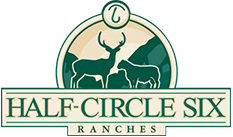Most of you reading this latest edition of our Dorper Journal are quite familiar with Dorper and White Dorper Sheep but there is a whole world of people taking a look at Dorpers now. World wide demand for meat is increasing and is projected to continue on its current path. As incomes increase around the world consumers look to add more meat to their diets. When you take a look at the increase in incomes and opportunities for people in China and India you are looking at 2 billion people who are going to be adding more meat to their diets. On the supply side drought, changing land use, and the aging of the majority of people in livestock production are leading to long term reduction in supply.
Many would be producers are looking at Dorpers not because they have a life long love of livestock but merely see the income potential of running sheep on their property. We all have the great opportunity now more than ever to be ambassadors of the breed and introduce Dorpers to a new group of people.
When faced with this new opportunity we must focus on the “Outstanding Characteristics of the Dorper” as presented in Dorpers into the New Century training manual.
- Meat Production: Optimum meat qualities, fertility, fecundity (twins), weight gain, and carcass quality.
- Adaptability: Low mortality rate, reproduction tempo, growth rate, body condition
- Hardiness: Dorpers are able to survive and thrive under a variety of conditions
- Pasture Utilization: Dorpers are non-selective in their grazing habits and this stands in great contrast to most other animals be they wild or domesticated.
- Good Mothering Qualities: They lamb easily and look after their lambs
- Covering: A shedding sheep keeps labor costs down. This is an important aspect of the breed and is what brings interest from new breeders.
- Dorper Skins: Leather quality among the best in the world
- General Appearance: Dorpers are pleasing to the eye!
As well as explaining these outstanding characteristics we as breeders need to focus on keeping and improving these important qualities of the breed that have brought us to where we are now. There is nothing more pleasing that to see a healthy Dorper ewe with twin lambs out grazing and doing “her thing”.
I hope you enjoy our third Dorper Journal and keep it as a handy reference as you explore the world of Dorper Sheep with us.
Dorper Regards,
Philip D. Glass
President ADSBS
